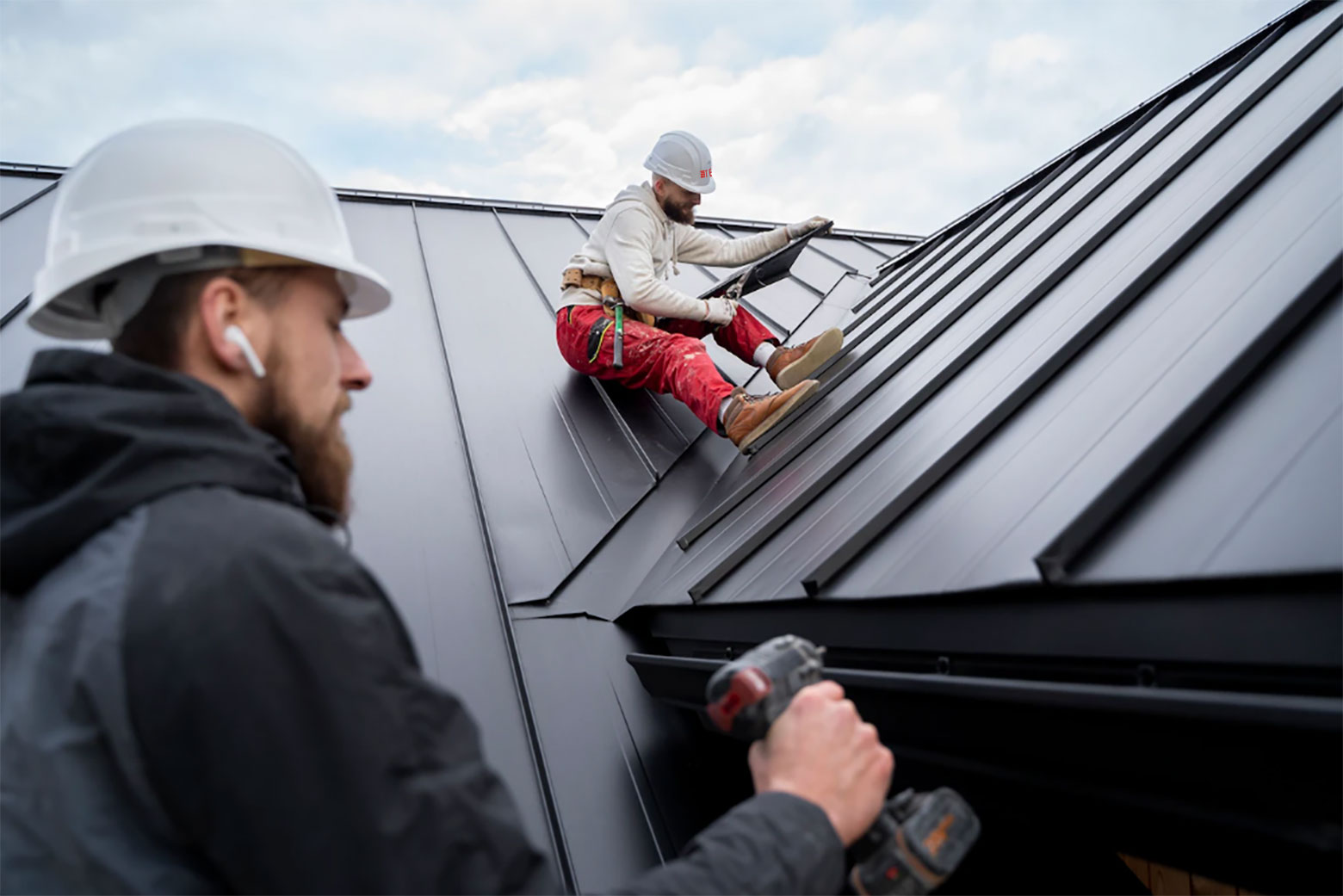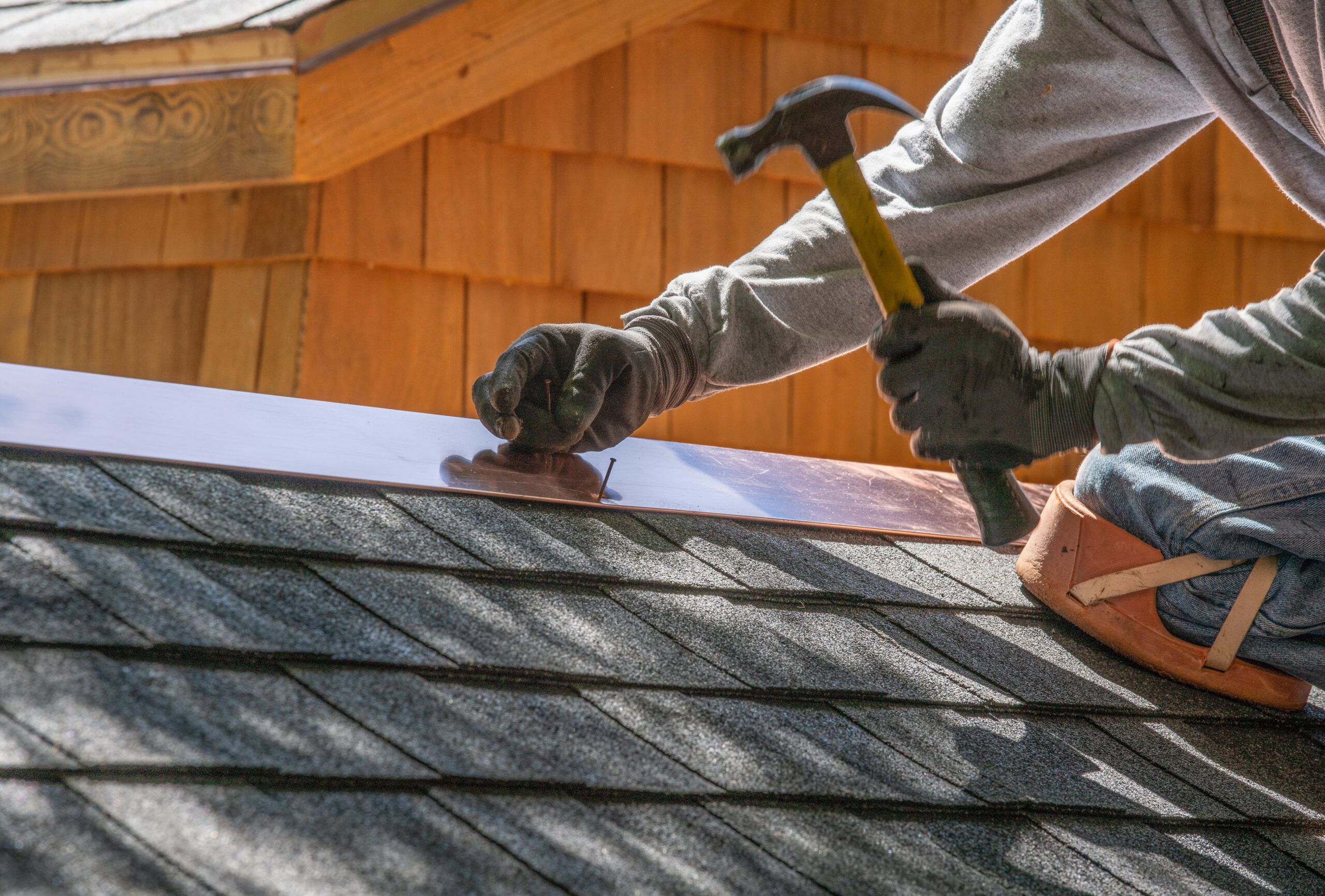Recognizing the Various Kinds Of Roofings: A Comprehensive Overview for Homeowners
In the world of homeownership, choosing the appropriate roof style is a choice that lugs substantial effects for both performance and visual charm. With a selection of options-- ranging from the traditional gable to the contemporary flat-- each type offers distinct benefits and challenges that must line up with the property owner's environmental factors to consider and particular needs. Recognizing these distinctions not only help in making an educated selection however additionally affects long-term maintenance and power performance. As we explore the details of numerous roofing system kinds, it comes to be obvious that dimension does not fit all; the ideal selection might surprise you.
Saddleback Roof
Gable roofings, defined by their triangular form, are among the most prominent roof covering styles because of their simpleness and efficiency in losing water and snow. This style features two sloping sides that meet at a ridge, enabling for efficient water drainage and decreasing the danger of water build-up. The steep pitch commonly connected with saddleback roofs enhances their ability to deal with heavy precipitation, making them ideal for various environments.
In addition to their practical advantages, saddleback roofs use visual versatility. They can be adapted to different architectural styles, from conventional to modern homes. The layout can additionally suit added functions such as dormer windows, which boost natural light and air flow in the attic space.
Additionally, saddleback roofs offer ample area for insulation, adding to power efficiency. Property owners can pick from a variety of roof products, consisting of asphalt tiles, steel, and floor tiles, further boosting modification options.
Regardless of their benefits, gable roofs may need additional support in locations prone to high winds or hefty snowfall. Overall, the saddleback roof remains a preferred option due to its blend of functionality, sturdiness, and visual appeal.
Flat Roofs
Flat roofs are usually acknowledged for their minimalist style and functional applications, particularly in business and industrial setups (oahu roofing). These roofings feature a horizontal or nearly horizontal surface, which allows for easy building and functional space usage. While they may do not have the aesthetic appeal of pitched roofs, level roofings provide numerous benefits, especially in city atmospheres where maximizing room is vital
One of the key benefits of level roofing systems is their accessibility. Home owners can use the roof area for various objectives, such as rooftop yards, terraces, or solar panel installments. Furthermore, level roofings are usually more economical to install and preserve contrasted to their sloped equivalents, as they need less products and labor.
Nevertheless, level roofs do existing certain difficulties. Correct drainage is vital to avoid water merging, which can lead to leaks and architectural damage. Hence, selecting high-grade waterproofing products and routine examinations are important for making certain long life. Usual products utilized for level roof coverings consist of built-up roof (BUR), modified asphalt, and single-ply membranes, each offering unique advantages. In general, level roofs function as a adaptable and useful option for numerous homeowners and organizations alike.
Hip Roof Coverings
Hip roof coverings are defined by their sloped sides that converge at the top, developing a ridge. This layout stands out from gable roof coverings, as all four sides of a hip roofing incline downwards towards the wall surfaces, providing a more secure structure. The angle of the slopes can vary, enabling convenience in architectural appearances and performance.
One of the main benefits of hip roofing systems is their capability to withstand hefty winds and negative weather. The sloped surfaces allow better water drainage, minimizing the danger of leaks and water damages. In addition, hip roofing systems supply enhanced attic space, which can be used for storage space and even converted right into livable locations.
Nonetheless, constructing a hip roofing can be a lot more complex and costly than less complex roofing types, such as saddleback roofs. The added product and labor included in developing the slopes and guaranteeing appropriate architectural honesty can lead to higher expenditures. Despite these downsides, numerous house owners favor hip roofs for their durability, visual allure, and capacity for energy performance.
Mansard Roof Coverings
Mansard roof coverings, commonly recognized by their special four-sided design, function two inclines on go to this site each side, with the reduced incline being steeper than the upper. This building design, originating from France in the 17th century, is not only cosmetically enticing but practical, as it takes full advantage of the functional space in the top floorings of a building. The steep lower incline enables even more headroom, making it an excellent selection for attic rooms or loft spaces, which can be exchanged living rooms.
Mansard roofings are identified by their versatility, accommodating different architectural designs, from standard to modern-day. They can be constructed with various materials, consisting of asphalt tiles, slate, or steel, giving homeowners with a series of alternatives to fit their choices and spending plans. In addition, the layout enables for the combination of dormer home windows, boosting natural light and ventilation in the top degrees.
However, it is vital to think about the potential downsides. Mansard roof coverings might require even more upkeep as a result of the intricacy of their style, and their steep inclines can be challenging for snow and rain drainage. In general, mansard roofs combine elegance with usefulness, making them a preferred option among homeowners looking for distinct architectural functions.
Dropped Roofs
As house owners progressively look for simplicity and capability in their architectural styles, dropped roof coverings have actually arised as a popular choice. Identified by a single sloping airplane, a shed roofing provides a minimalist aesthetic that matches different home styles, from contemporary to rustic.
Among the primary benefits of a shed More Bonuses roofing system is its straightforward building and construction, which frequently equates to reduce labor and product costs. This design permits effective water drainage, decreasing the threat of leaks and water damages. Furthermore, the vertical slope supplies sufficient space for skylights, boosting natural light within the inside.
Shed roofings likewise supply flexibility in regards to usage. They can be effectively integrated into enhancements, garages, or exterior structures like pavilions and sheds. Moreover, this roofing system design can fit various roof covering materials, including metal, asphalt shingles, or also green roofs, straightening with environment-friendly initiatives.
Nonetheless, it is important to think about regional environment conditions, as heavy snow loads may require modifications to the roofing's angle or structure. Generally, shed roofs provide a useful and cosmetically pleasing option for property owners wanting to make best use of performance without jeopardizing style.
Final Thought


Gable roofing systems, characterized by their triangular shape, are amongst the most popular roofing designs due to their simpleness and performance in shedding water and snow. oahu roofing. The high pitch commonly linked with gable roof coverings boosts their ability to deal with hefty rainfall, making them suitable for different climates
While they may do not have the aesthetic allure of pitched roofing systems, flat roofs provide numerous advantages, especially in city settings where making best use of area is important.

Comments on “Oahu Roofing: Reliable Roofing Solutions for Homes and Businesses”